Medically reviewed by
Dana K. Williams, FNP-C
When an asthma attack occurs, your bronchial tubes – the pathways that let air enter and leave the lungs become inflamed and the muscles surrounding the bronchial tubes – tighten. This results in narrowing of the air passages, making breathing very difficult. Other symptoms may also appear including coughing and wheezing. An asthma attack can be an unnerving experience for adults and children alike. That is why asthma sufferers and those who care for them should be familiar with common asthma triggers and avoid them when possible.
Common Triggers for an Asthma Attack
While asthma itself is not an allergy, an allergic reaction can trigger an asthma attack. Controlling your allergies goes a long way to lessen the severity and frequency of asthma attacks. Getting treatment for allergies should rank high on the list of things to do to thwart asthma exacerbations.
Allergens to avoid:
- Pollen (from trees, grasses, and weeds)
- Dust mites
- Cockroaches
- Animal dander (cats, dogs)
Airborne irritants such as smoke and air pollution and strong smells such as perfume can also provoke symptoms. Illnesses like the flu, other viral infections, and sinusitis can also lead to asthma exacerbations. Other possible triggers include weather changes, cold air, and exercise. For those experiencing asthma during exercise, learn more about safe exercise practices.
What to Do If You or Your Child Suffers an Asthma Attacks
- Keep yourself or your child calm while the attack is in progress. Panic can make the asthma attack worse.
- In most instances, your doctor has prescribed a quick-relief (also known as “rescue”) medication to use by inhaler or nebulizer machine. If you find that you or your child is needing the quick-relief medication frequently, contact your allergy and asthma specialist to arrange an appointment.
- If you develop shortness of breath or constant coughing and/or wheezing, or if your symptoms are worsening, seek immediate medical treatment.
Make an Appointment with an Asthma Specialist in Charlotte
Serving the Charlotte area since 1952, Carolina Asthma & Allergy Center is the area’s largest asthma and allergy practice made up entirely of board-certified physicians. We deliver patient-focused care to all ages. We are committed to educating the patient and caregiver, improving the quality of life, and maintaining our own high standard of expertise and care. Areas of specialty include food allergy, drug allergy, venom allergy, and asthma. Carolina Asthma & Allergy Center helps patients breathe, live and ultimately thrive by effectively treating and often curing allergy and asthma challenges. With 15 offices and 18 board certified allergists one of our locations is sure to be nearby to where you live. Call today for an appointment.



